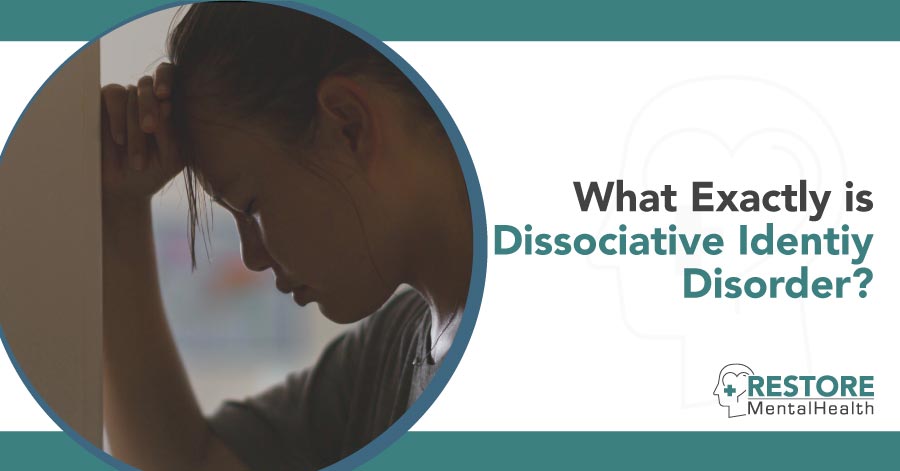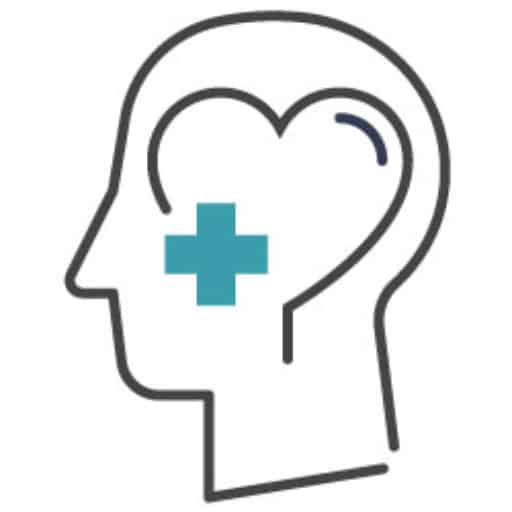Learn about dissociative disorder and how it can affect people. Find out what its symptoms are and what treatments are available.
You may have seen dissociative disorder in a popular Hollywood film or best-selling novel, as fictional characters frequently have multiple personalities or forget who they are.
People suffering from dissociative identity disorder (DID), one of the most common variants of dissociation disorder, find it challenging to maintain a single identity. They may feel like they have multiple people living in one body or that their identity has fragmented into pieces.
So, what exactly happens when you have dissociative or dissociation disorder? What are dissociative symptoms? And most importantly, what treatments are available?
What Is Dissociative Disorder?
Dissociative disorder is a rare but well-researched mental health condition that alters a person’s perception, memory and identity. It’s characterized by gaps in a person’s thoughts, memories and sense of self. These gaps make it difficult for the person to function normally in daily life.
There are a few variants of dissociative disorder. The most common type is dissociative identity disorder (DID), formerly known as multiple personality disorder (MPD). DID is also sometimes confused with other mental health conditions.
Benjamin Rush, a physician and one of the United States’ founding fathers, described at least three phenomena in his writings and lectures that are similar to dissociation disorder. However, Mary Reynolds in 1811 was the first officially reported case of MPD or DID.
How Common Is DID?
The National Alliance on Mental Health reported that at least 75% of people might have to deal with at least one temporary episode of dissociative disorder in any form. Temporary disorders will turn into chronic episodes for 2% of the population.
According to the National Center for Biotechnology Information, around 1.5% of the global population is affected by mild or severe DID.
Earlier trauma is often the main culprit when it comes to dissociative disorders. Our minds will sometimes use this to protect themselves from a situation that’s too difficult to cope with. For example, a child who is verbally, physically or sexually abused may develop DID as a way to dissociate from the trauma.
Researchers haven’t found any correlation between dissociative disorders and medication, alcohol or other external substances. Medical conditions like seizures or head injuries don’t result in dissociative disorder either.
Symptoms and Signs
If you or a loved one is struggling with dissociation, you might be wondering what the most common dissociative symptoms are.
Dissociative disorder has some common symptoms that can vary depending on the type of dissociative disorder the patient is experiencing.
DID is the most severe and common form of dissociative disorder. Physical symptoms like headaches, nausea and dizziness may also occur. DID is often accompanied by other mental health conditions, such as anxiety, depression and post-traumatic stress disorder (PTSD).
Here are some of the specific symptoms to watch for:
- Amnesia, losing your memory about any particular period or forgetting personal information like contact details or addresses
- Emotional detachment from yourself
- Self-harming behavior
- Intense headache
- Inability to focus on one’s identity
- Substantial mental stress related to personal, work or relationship issues
- Different common mental health conditions.
Other types of dissociative disorders include:
- Dissociative amnesia: Patients find it difficult to remember their personal information. The memory loss may be due to psychological trauma or stress. It’s essential to differentiate amnesia from general forgetfulness. The time periods of dissociative amnesia may vary widely. Patients sometimes can’t recall events of seconds, minutes, days or even months.
- Dissociative fugue: An affected person may experience sudden, unexpected travel away from home. The person may not remember their past or who they are. They may experience temporary amnesia and forget why they’ve come to a place.
- Depersonalization disorder: This is characterized by a feeling of detachment from oneself. The person may feel like they’re in a dream or watching themselves from outside their body. Sometimes they may also feel the things happening around them are not real.
- Dissociative disorder not otherwise specified (DDNOS): When dissociative symptoms don’t meet the criteria for any other specific disorder or have overlapping symptoms, it’s called a DDNOS.
Mental health professionals often analyze and discuss your symptoms to find out the type of dissociative disorder you may be experiencing.
What Does It Feel Like to Live With DID?
Split, a 2016 Hollywood thriller film, featured a main character with 24 distinct personalities caused by DID. Stories like this are great for entertainment, but these generalizations and exaggerations are often far from reality of what a person with dissociative disorder deals with.
Business Insider interviewed several people who self-identified as having DID. Here are a couple of their findings:
- A female patient named Jenifer experienced having four different individuals within herself. One is 39 years old, whereas the others are 3 years, 7 years and 16 years of age. She claimed that her alternative personalities helped her gain mental stability at difficult times.
- A 38-year-old male patient from California had three alternative personalities: Rich (the original patient, male), Bobbie (female) and Fred (male). Among them, Fred was not present at the early stage of Rich’s life. He initially experienced shorter phases of disassociativeness, whereas the later episodes were longer.
Both Jenifer and Rich suffered severe abuse from their parents during their childhood, which could certainly link to the dissociation they suffer from as adults.
How to Live a Better Life
If you have a dissociative disorder, there are treatments that can help you manage your symptoms and live a better life.
- Psychotherapy: Many mental health professionals recommend psychotherapy as one of the most effective treatments for dissociative disorders. It can help you understand your condition and learn how to cope with your symptoms.
- Medication: Medication can also ease symptoms and treat dissociative disorders. Physicians may prescribe antidepressants, antipsychotics or antianxiety medications to help relieve symptoms.
- Group therapy: If you have dissociative identity disorder, you may also benefit from group therapy. This can provide support and guidance from others who understand what you’re going through.
Living with dissociative disorder can be challenging, but a guided and structured treatment plan can help you manage your symptoms and live a better life.
Here at Restore, our compassionate professionals are available 24/7 to assist you with any mental health difficulties. Are you struggling with symptoms or difficulties similar to those discussed here? Don’t hesitate to call us at (877) 594-3566 — we’re here to help.



